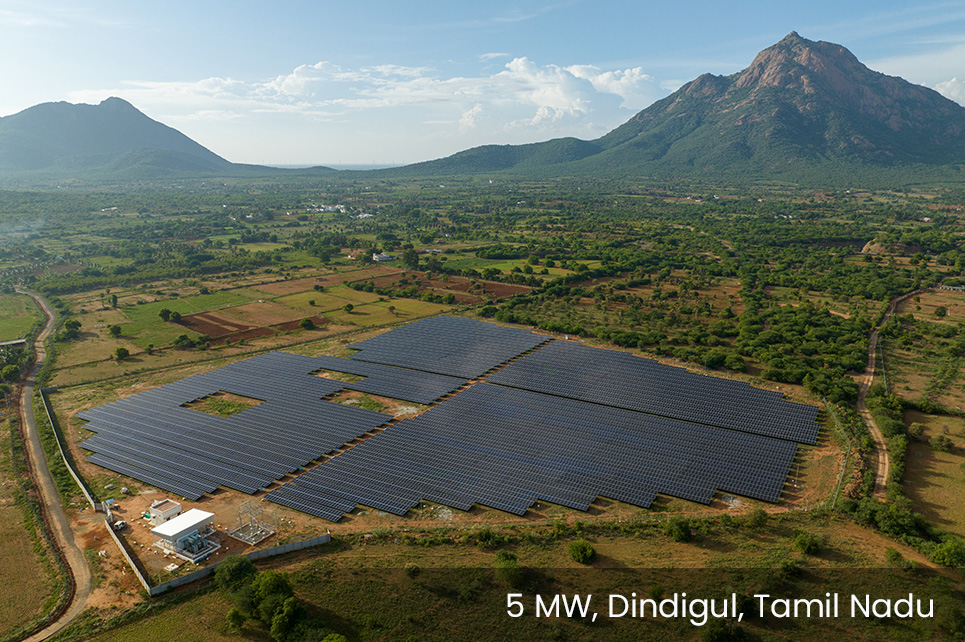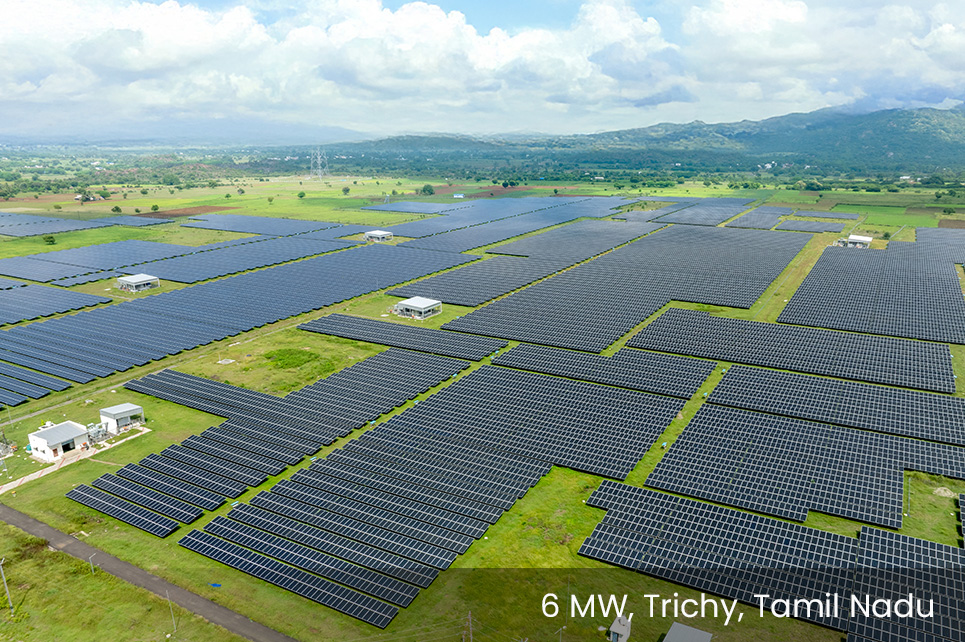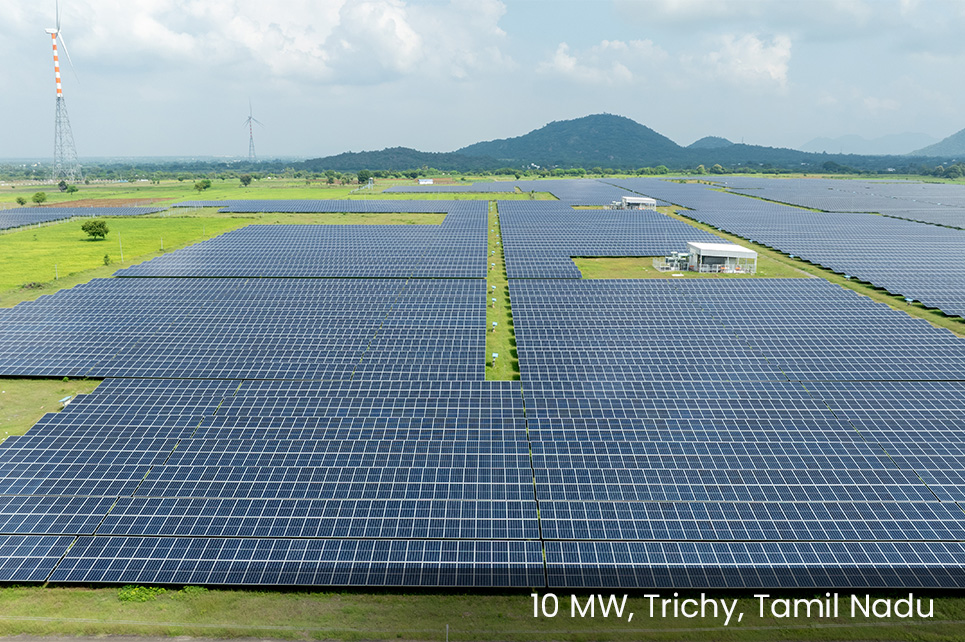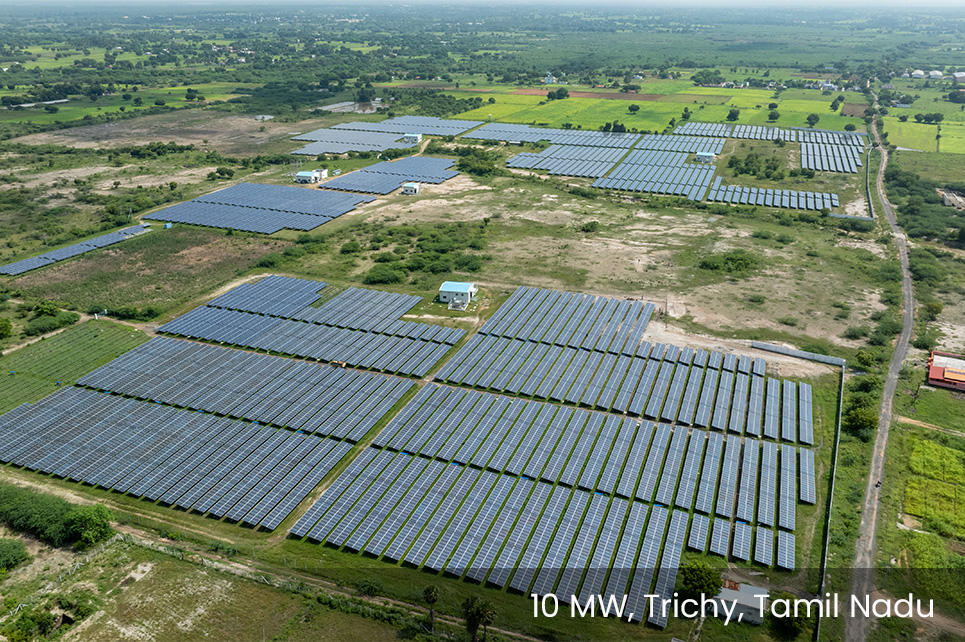SWELECT's Open Access Solar Solutions
India has seen significant growth in Open Access solar installations, a program gaining traction globally.
SWELECT’s Intrastate open access solar solutions empower large-scale Commercial & Industrial (C&I) consumers to procure renewable energy directly from the Solar PV plants owned by SWELECT by entering wheeling agreement with the State DISCOM (Distribution Company)
Displacement of grid power by solar energy reduces carbon footprints, aiding corporations in achieving their ESG compliance and sustainability targets.
Introduced through the Electricity Act, 2003, the Intrastate Open Access scheme allows large electricity consumers (HT) to purchase power directly from solar energy generators, wheeling the power through the traditional utility grids. This provides several benefits.
-
Cost Savings: Lower tariffs compared to traditional grid electricity.
-
Scalability: Access to renewable energy without property footprint limitations.
-
Environmental Benefits: Reduces carbon footprint and supports sustainability goals.
-
Meet the ESG compliance of Corporate governance

The Process
-
Power Generation: SWELECT generates solar power from its existing and new MW+ capacity solar farms in Tamil Nadu.
-
Power Purchase Agreement: SWELECT signs long-term bilateral Power Purchase Agreements (PPAs) with HT consumers, offering attractive solar energy tariffs based on their chosen open access model.
-
Power Delivery: Generated solar power is delivered to consumers' HT locations through the state DISCOM grid.
-
Consumption-Based Payment: Consumers pay only for the power consumed at their location.
-
Comprehensive O&M: SWELECT handles end-to-end operation and maintenance of the solar plant.
Group Captive Solar Plan
A group captive solar plant is jointly owned and operated by multiple companies, allowing them to benefit from solar energy without significant upfront investment.
How It Works:
- The plan enables a group of HT consumers to form a Special Purpose Vehicle (SPV) company and jointly invest 26% equity in the SPV project. SWELECT will invest the rest of the project cost.
- Captive users sign long-term Power Purchase Agreements (PPAs) with SWELECT.
- Captive users consume a minimum of 51% of the power generated from the solar SPV based on their equity share.
- The solar SPV is developed and maintained by SWELECT.
- SWELECT holds ownership of the solar plant.
- Consumers pay for the energy delivered to them through the State DISCOM grid as per the PPA to SWELECT.
- All the other DISCOM charges, Open access charges will be borne by the Captive users
Benefits:
-
Cost Savings: Huge Cost savings on displacing Grid power with Solar Energy
-
Grid Independence: Decreases reliance on traditional electricity grids.
-
Sustainability: Utilizes renewable energy, reducing environmental impact.
-
ESG: Attributes to green energy compliance
-
Price Stability: Protects against rising grid electricity costs

Third party power purchase
TPPAs are becoming an increasingly popular option for businesses and organizations of all sizes. This third-party power purchase (TPPA) is ideal for HT consumers, offering risk-free discounted tariffs without any project investment. Clients only pay for consumed units, along with state DISCOM open access and stipulated charges.
Key features
- Zero investment required from the consumers.
- SWELECT invest 100% of the project cost.
- HT consumers sign a bilateral PPA with SWELECT for power supply at discounted tariffs.
- Guaranteed discounted tariffs throughout the PPA tenure.
- SWELECT handles plant maintenance and periodic repairs, ensuring worry-free operation for clients.
Key Advantages:
-
Reduced electricity costs: Moderate Savings on displacement of Grid Power
-
Reduced carbon footprint: By purchasing solar power, customers are helping to reduce their reliance on fossil fuels and their associated emissions.
-
No upfront investment: Customers do not need to invest in the upfront costs of solar panels, installation, or maintenance.
-
Meet the ESG compliance by reducing the carbon footprint
Contact
Selvam S





